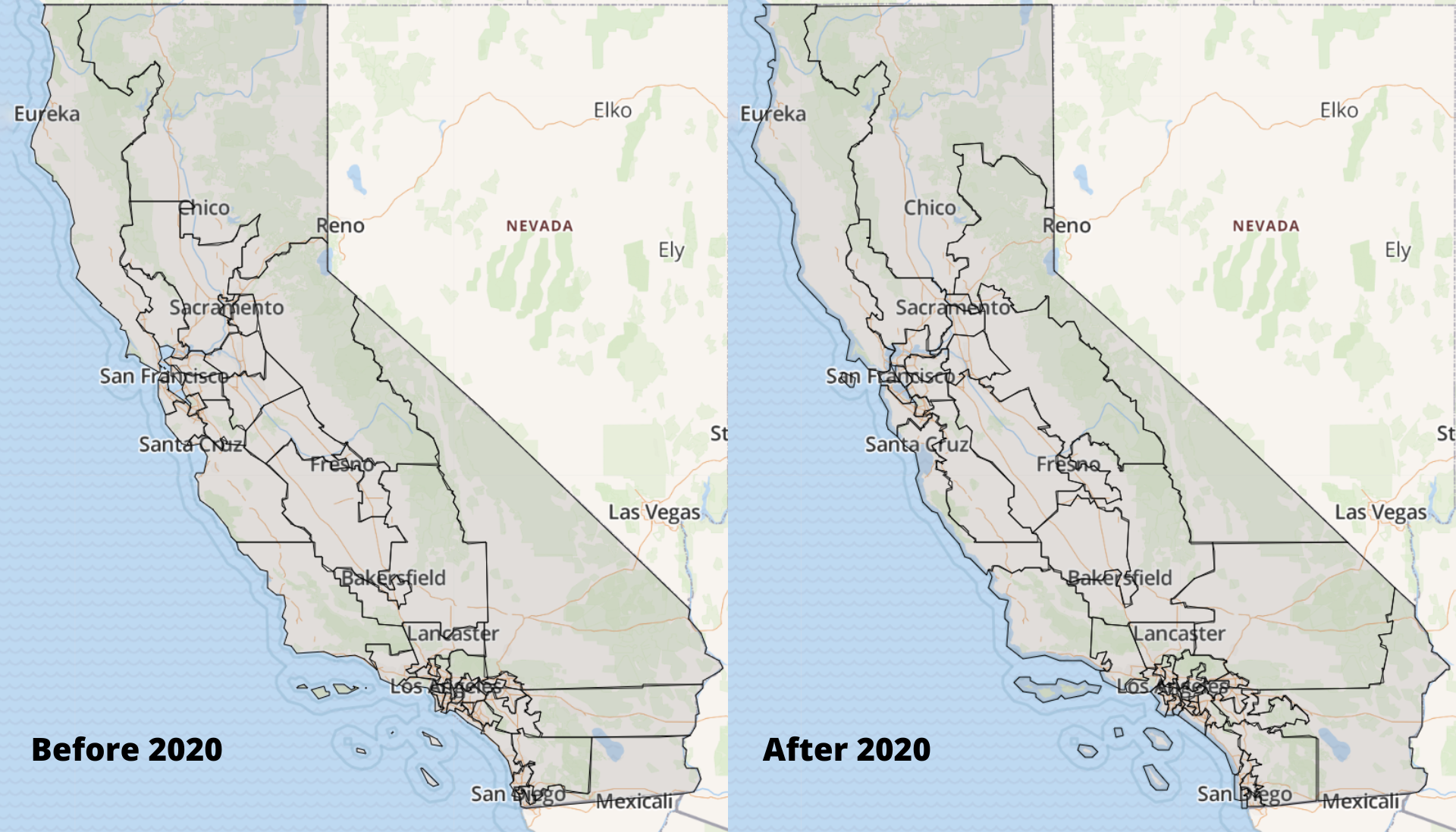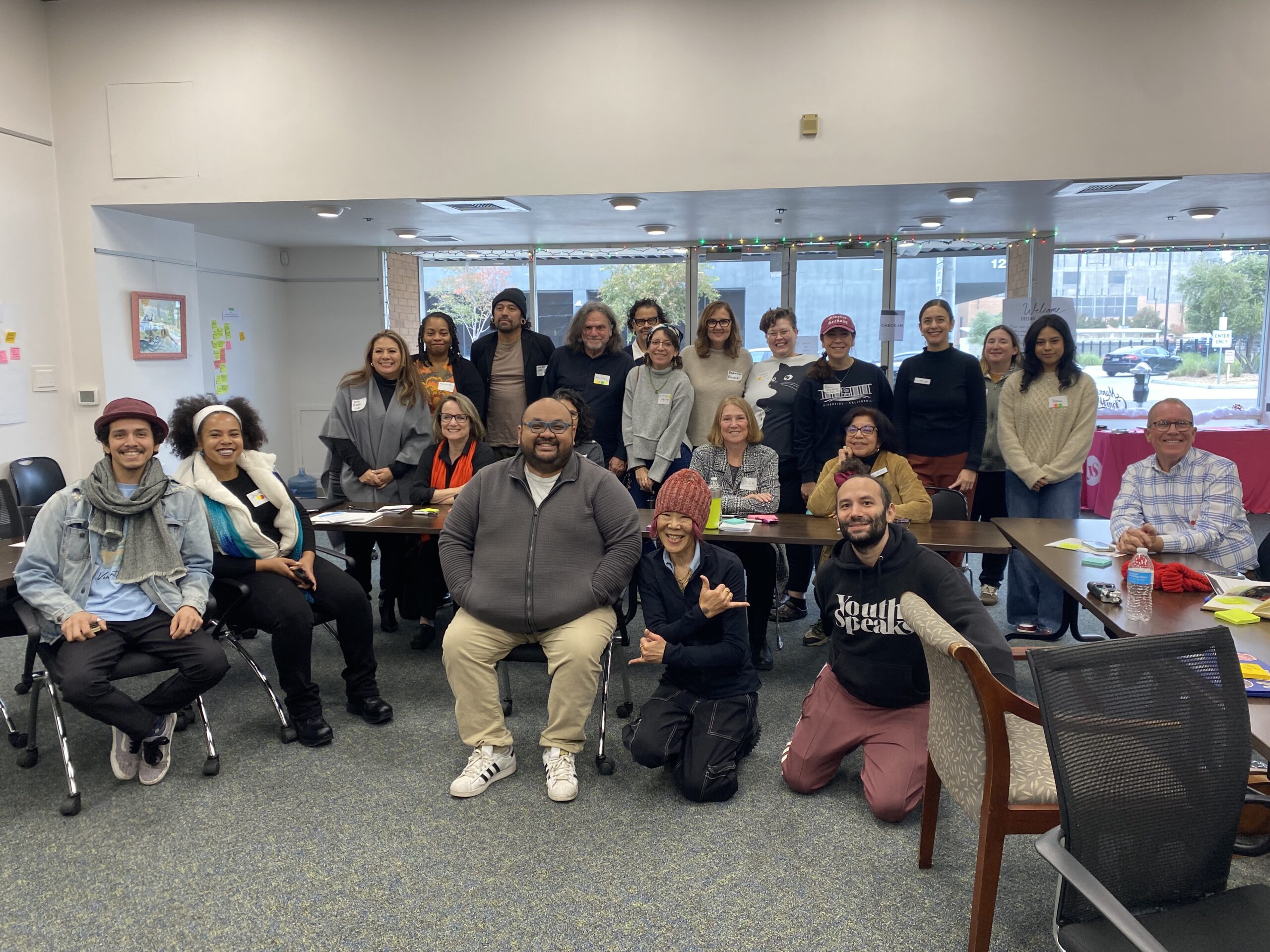
Every 10 years, after the federal government publishes updated census information, California must redraw the boundaries of its Congressional, State Senate, State Assembly, and State Board of Equalization districts, so that the districts correctly reflect the state’s population.
In November 2008, California voters passed the Voters FIRST Act, authorizing the creation of the Independent Citizens Redistricting Commission to draw new district lines, taking the job out of the hands of the California Legislature and transferring it to the citizens. In 2010, the Voters FIRST Act for Congress added the responsibility of drawing Congressional districts to the Commission.
The 14-member Commission is made up of five Republicans, five Democrats, and four members not affiliated with either of those two parties. The Commission must draw the district lines in conformity with strict, nonpartisan rules designed to create districts of relatively equal population that will provide fair representation for all Californians.
The individuals responsible for the redistricting of the state are public people who work for the people of the state, and their brief biographies can be found here.
The sole purpose of redistricting every 10 years is so that the voters are able to vote for their respective communities as the population gets larger and it becomes more deserving to represent themselves in a new manner. After the federal government conducts and completes their national census, this commission is given a year to redistrict the state in a fair and equitable manner.
California as a whole is represented by 52 people – previously 53 – in the House of Representatives, 40 state senate districts, 80 assembly members, and 4 board of equalization members. This group will draw new district lines where official leaders are granted constituents that place them in office for the next decade.
This commission is not given total responsibility when drawing the new district lines. They are called to hold public meetings throughout the state in order to obtain the participation and opinions of Californians throughout.
The commission is also responsible for analyzing important data and input from the census, from public opinion, and more in order to ensure reliable and fair new district lines are drawn. This is a huge responsibility that calls for the people to both always participate in the census and in the public hearings for redistricting consideration.
But what changes did the state conclude on and how will it impact voting?
With the primary elections taking place on June 7, 2022, the new redistricting lines will create changes that may possibly leave people voting in a whole new district.
First, anyone can find their respective districts and their new voting district here. Cal Matters allows people to find their new potential representatives and lays out a lot of crucial information to better inform their decision.
The new redistricting changes have impelled a lot of public opinion and some significant changes that totally split cities, like our respective Fresno, and even forced hopeful candidates to represent districts that they are not even familiar with, especially districts within the Valley that will be haphazardly redistricted together, bound to create a myriad of problems within the coming years.
The redistricting policies also prove themselves as challenging for incumbents, forcing them into new areas of the state they are called to run for and represent. Aforementioned, many hopeful congressional candidates will be running in districts they are not completely familiar with.
For example, Congressional District 5 used to be a small district just northeast of San Francisco, but is now the district of Mariposa, Tuolumne, and parts of Madera County – counties that were once represented by District 4, represented by long-time Republican incumbent Tom McClintock.
He is to run for the newly drawn District 5 that includes North Fresno and many of his former constituents, both ensuring a continued Republican district, another awkward split in Fresno representative lines, and a brand new representative for many Fresno citizens. This is just to elaborate the drastic district number changes throughout the state.
Nonetheless, many issues and uncertainty will arise based on these new district lines and former district issues will become issues for brand new districts, since this is the first time many cities will be paired together and split up completely.
For example, Fresno will be split up in three congressional districts: North Fresno being a part of District 5 that will have a constituency as far as east Sacramento; Northwest and most of South Fresno being a part of District 21 with constituency reaching to Sanger and North Visalia; and parts of North Fresno and all of Clovis being a part of District 20 that will go as far as curling south around Bakersfield.
Looking at District 21, the residents of this area is considerably non-white, Hispanic populated with District 20 being predominantly white, conservative, agriculturally-based voters. This is to show how meticulous such a redistricting process can be. Binding voting trends, ethnic groups, and socioeconomic backgrounds are often used to facilitate district lines.
This is solely looking at the redistricting of Congress, which proved itself as more critical as tensions rise in Washington. Congressional seats are far more contested and a priority to be filled by a representative that will truly advocate for the issues of the Valley.
Redistricting seriously impacts each voter in California, not just congressionally, but also considering assembly members and who will stand up for your newly shaped district. The primaries are just around the corner and many races are contested and highly sought over. Although new voting borders have been made, every voice is still incredibly crucial.


